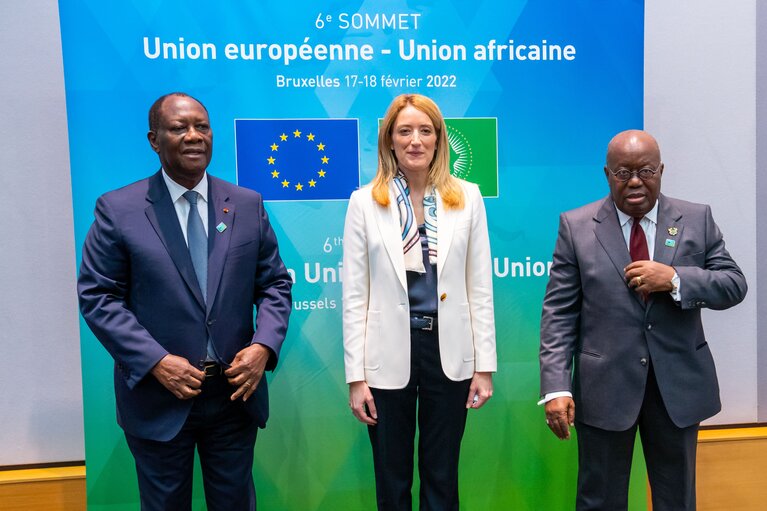„Partnership at eye level“ at EU-Africa summit a long way off

On February 17 and 18 took place the sixth and corona long awaited EU-Africa summit was held, at which the leaders of the African Union and the European Union meet every three years, alternately in Europe and Africa. The summit was organized around seven different "roundtables." But most of the outcomes were set beforehand behind closed doors, without significant consultation with civil society or involvement of the parliamentary level. This is all the more worrying because these decisions have far-reaching consequences. Here, I assess what the summit means for issues of migration, global immunization justice, and cooperation with African states.
What issues were negotiated?
The official list of topics ranges from growth financing, vaccine production, agriculture, education, culture, climate change, digitization and much more: Everywhere, the states of Africa are to be promoted in order to march together at eye level and as "closest partners and neighbors" in the direction of "solidarity, security, peace and sustainability" – as far as full-bodied claims go. But a real partnership at eye level unfortunately does not exist. For the sake of assessment, I would like to shine a spotlight on two central points of the summit:
Donations instead of self-determination: Rejection of Global Immunization Justice
Fighting the Corona pandemic would have offered a historic opportunity to break with old patterns of dependency. Already, the pandemic has massively exacerbated global inequalities. These divisions will continue to grow: While vaccination coverage in Europe is around 70%, and could be significantly higher if there was sufficient vaccination preparedness, only 12% of people in the African Union have had access to vaccines. It will likely take years to close this gap. Releasing the vaccine patents would be a watershed moment: establishing independent vaccine production is a matter of months, not years, after the granted release. Accordingly, the patent release has been vehemently demanded by African countries. However, the EU continues to categorically reject this and instead hands out handouts: 450 million doses are to be delivered by mid-2022, plus support payments for the distribution and administration of the vaccine doses to the population. This further cements the dependence of the AU states on Europe and on international pharmaceutical companies.
European borders in Africa: migration control to be expanded
In the area of flight and migration, too, a "partnership of equals" is a long way off. In fact, current agreements with African states are only very abstractly about combating the causes of flight, but very concretely about combating flight and migration itself. There are attempts to tie this even more closely to the allocation of funds. This will force states in Africa toThe EU's policy of building borders and limiting global freedom of movement is becoming more and more openly discussed. In the meantime, there is increasingly open talk of a Frontex deployment in Africa thought and negotiated, although the European Border Management Agency is currently failing to apply applicable law in Europe as well.
Overall, the EU has long lacked a comprehensive approach that goes beyond the buzzword "fighting the causes of flight. Increasing causes of flight cannot be permanently compensated for with higher fences and more restrictive agreements, and this policy certainly cannot be reconciled with European values and fundamental human rights.
Conclusion of the Summit: Old Dependencies Instead of "New Deals
The fine words of the joint final declaration can hardly conceal the fact that behind the facade of a departure into a common and equal future, there is little that can live up to this claim: In many cases, purported new investment sums are merely repurposed from commitments already made. In other places, promising showcase projects are presented, but they can hardly have a broad impact. While the final declaration contains some very welcome passages, for example on education financing and the transfer to special drawing rights - implementation of which remains to be seen - there are other sections that are far more critical and have therefore been examined in greater detail above. So even if there are selective improvements: Overall, the result is unfortunately a consolidation of old dependencies and inequalities in many places instead of the endeavored "new deal." Unfortunately, it will be a long time before "solidarity, equality and peace" find their way from flowery final declarations into the real world.